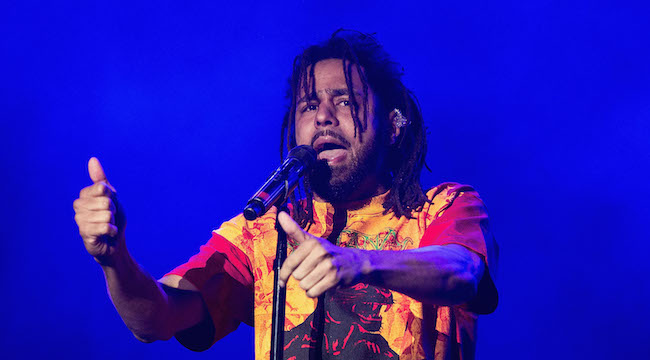
While the NFL has struggled with controversy surrounding the upcoming Super Bowl, the NBA has shown it really knows its audience. The basketball league announced that J. Cole would be the first solo rapper to headline the upcoming NBA All-Star Game halftime show, which reveals that the league also understands its chosen location, Charlotte, North Carolina, just a three-hour drive from J. Cole’s native Fayetteville. By booking the homestate hero, the NBA strengthened its bond not just with the venue but with hip-hop and changing demographics of its audience.
2019 GRAMMY® Award-nominated artist and North Carolina native @JColeNC will take the court in his home state to headline the 2019 #NBAAllStar Game halftime show (Sunday 2/17 @NBAonTNT)! pic.twitter.com/jU0P5fpzX5
— #NBAAllStar (@NBAAllStar) January 30, 2019
Though the NBA formerly took the NFL’s strategy of booking middle-of-the-road pop acts — Alicia Keys, John Legend, and Sting are among prior years’ performers — the Association also recognized that its target demographic skews younger and that younger viewers may not be excited about the same acts as their parents. Last year, the NBA took a step in the right direction by booking N.E.R.D., Pharrell Williams’ hip-hop/punk band with Chad Hugo and Shay Haley, for amassive performance that included an appearance from Migos. The league is listening to its fans — and its players, who typically love rappers like Cole and Migos — working more extensively with them on the marketing side as well. For instance, Cole’s “ATM” has been used as broadcast bumper music during nationally televised games all season.
Still, booking J. Cole — who is still far from a household name in much of America — is a bold move. Yes, hip-hop has replaced rock as the number one genre in the country and Cole is nominated for a pair of Grammys alongside 6lack and Miguel. But he’s also a relatively straightforward hip-hop artist whose musical stylings might not appeal to the fans who remember when Magic and Bird dominated the hardwood. There’s a certain level of risk involved, but it comes with a higher level of rewards as well. Endearing the league to a younger demographic ensures that NBA should remain popular as those younger fans age, while the NBA’s most direct competitor for eyeballs — at least through fall and winter — loses viewers thanks to its tarnished image and general cluelessness about what its audience wants to see.






